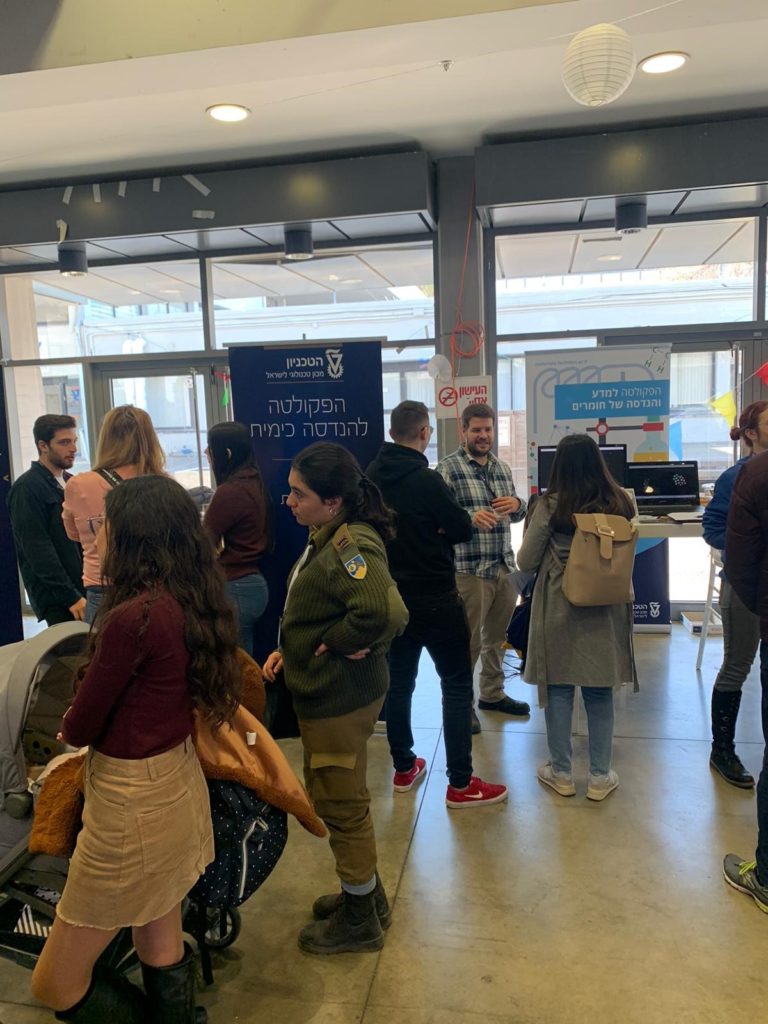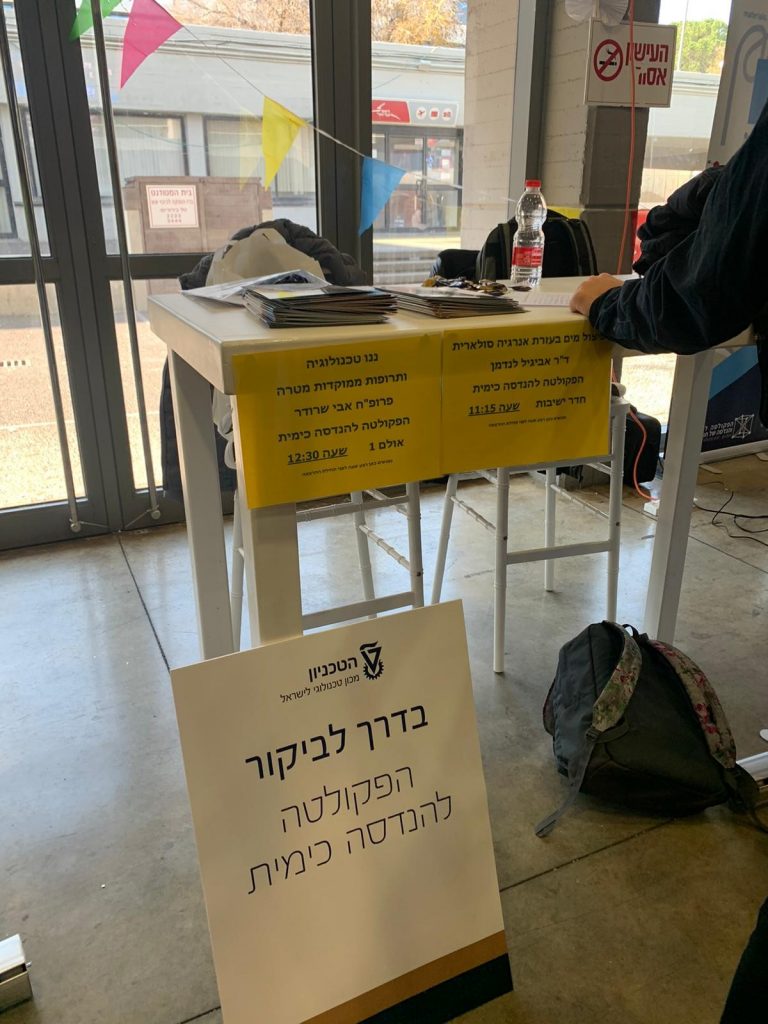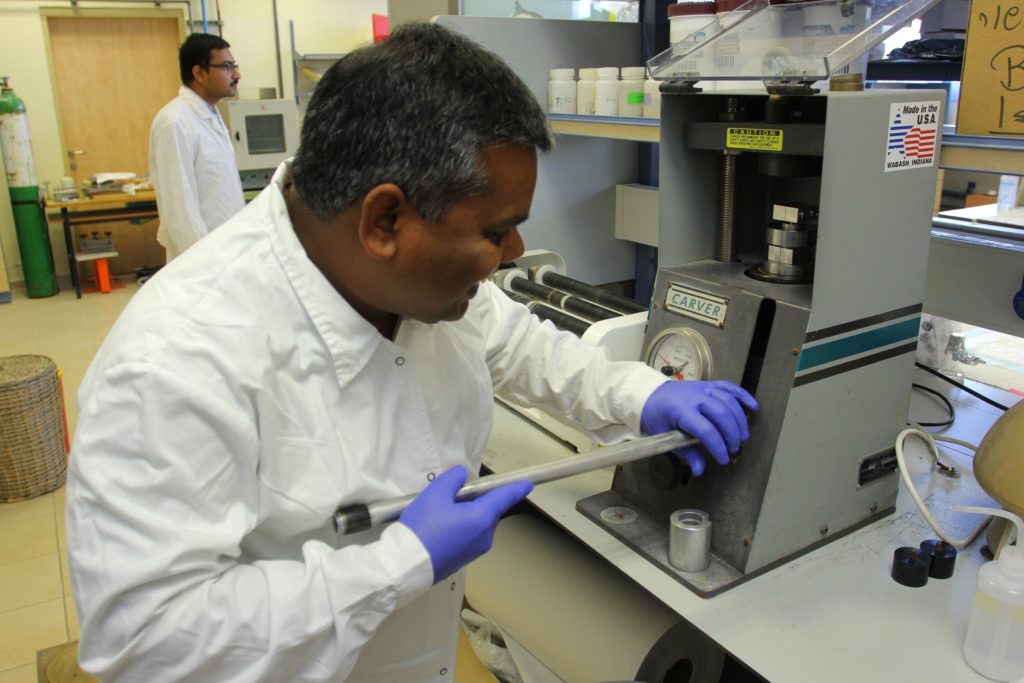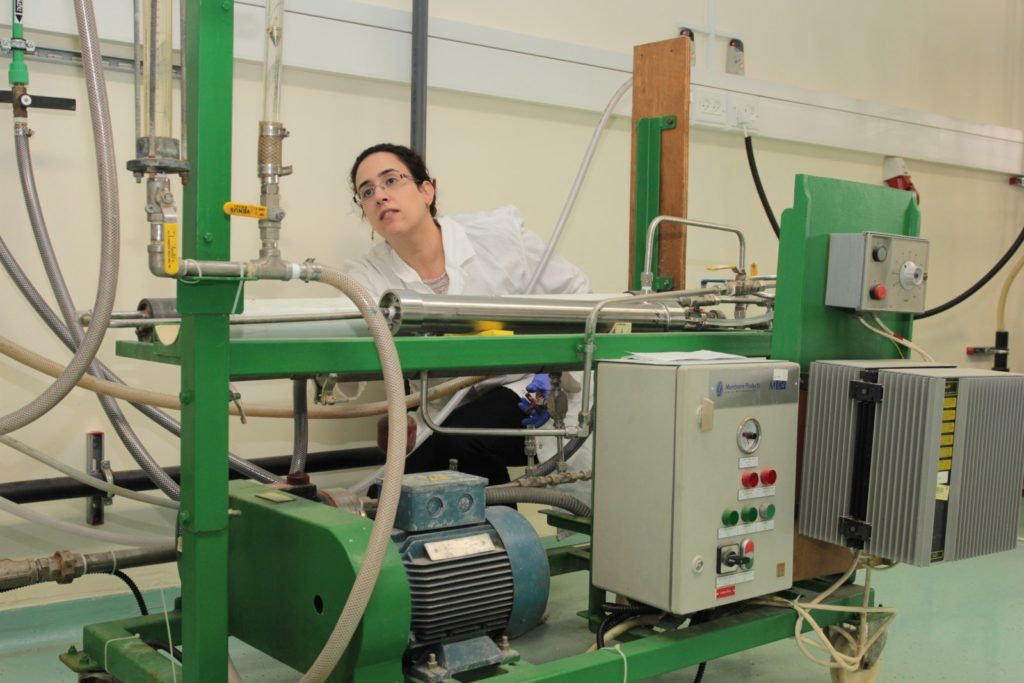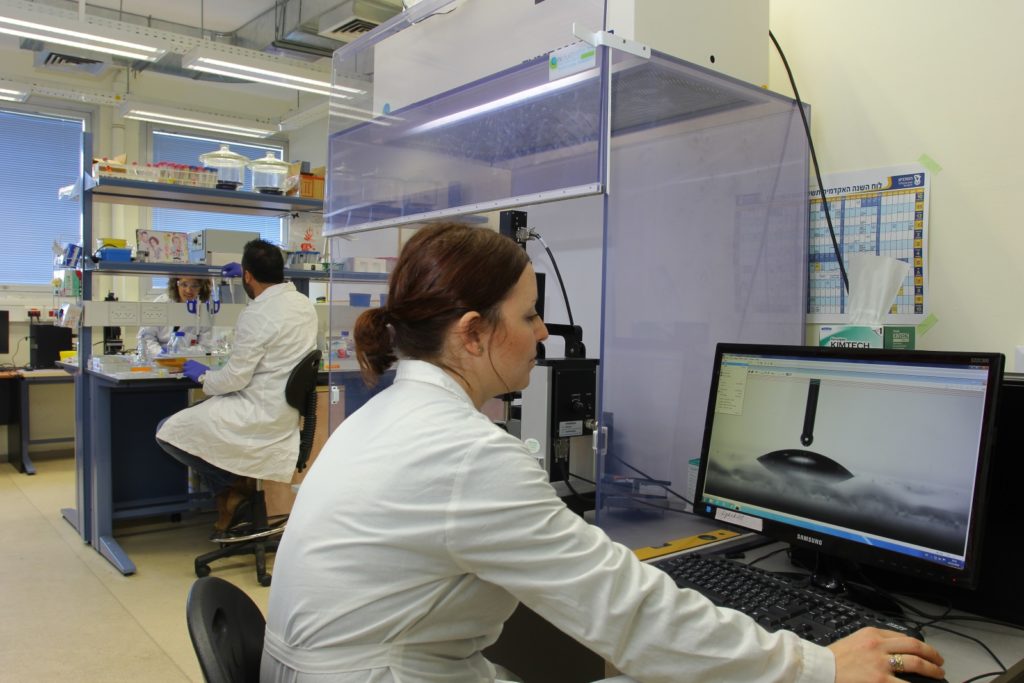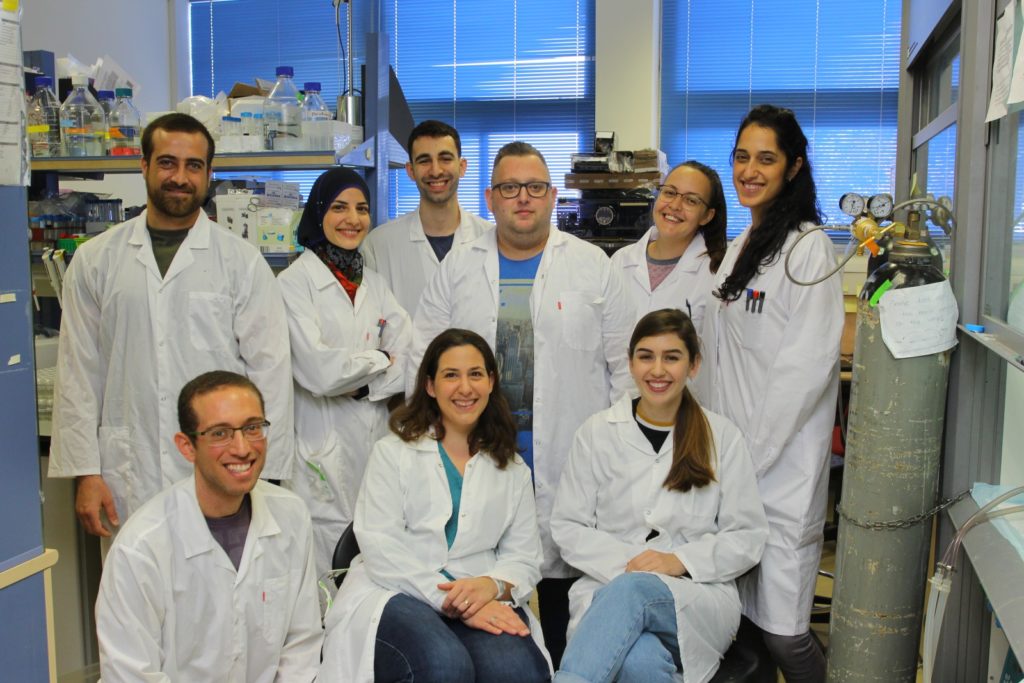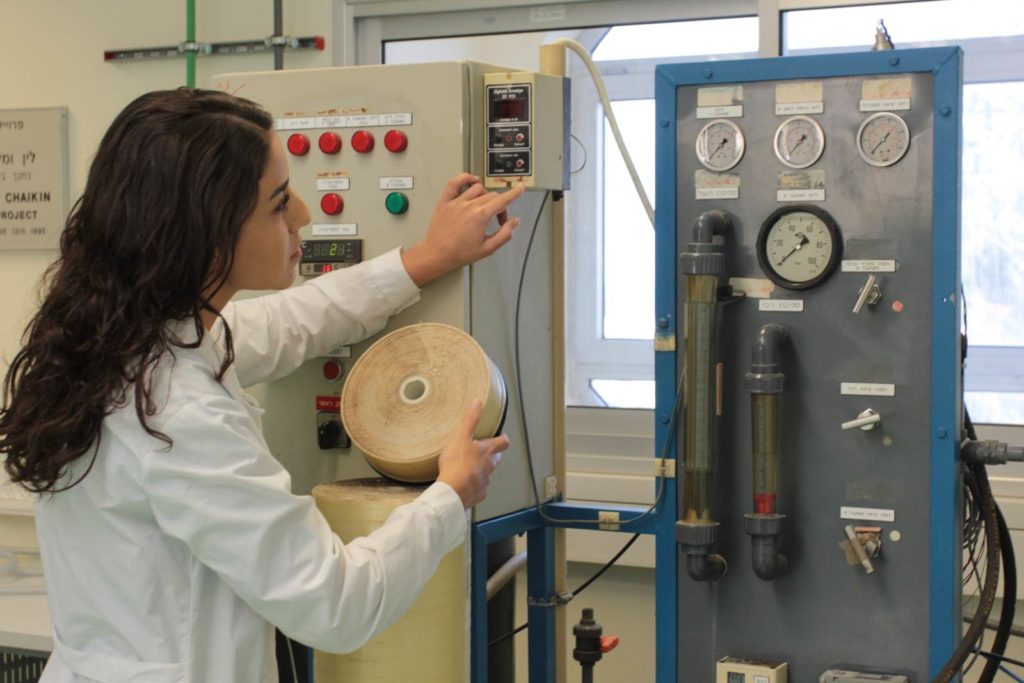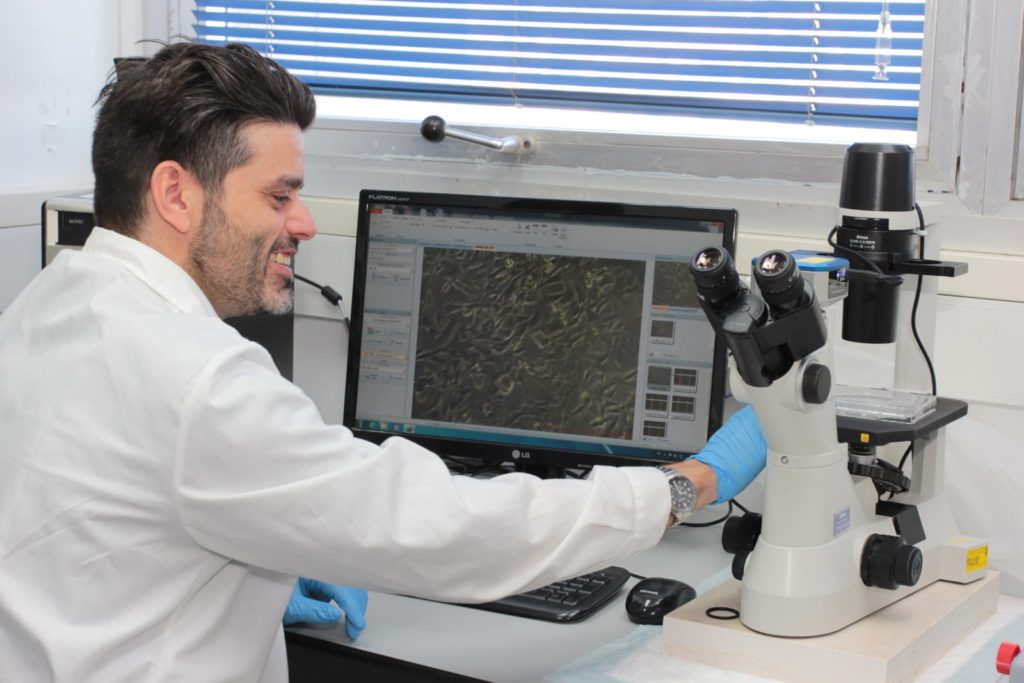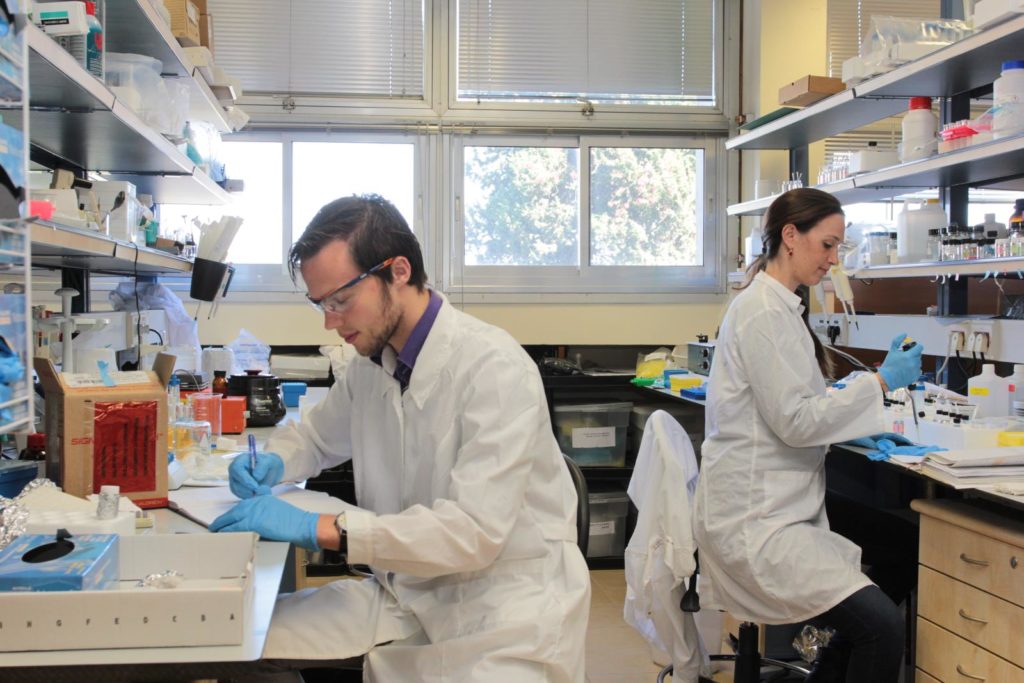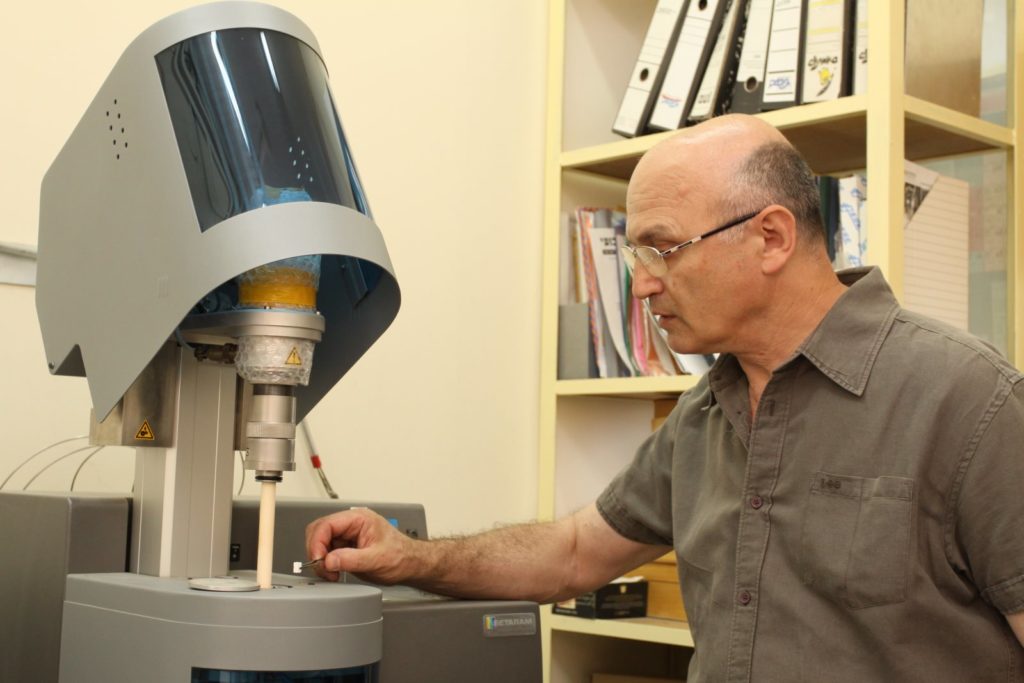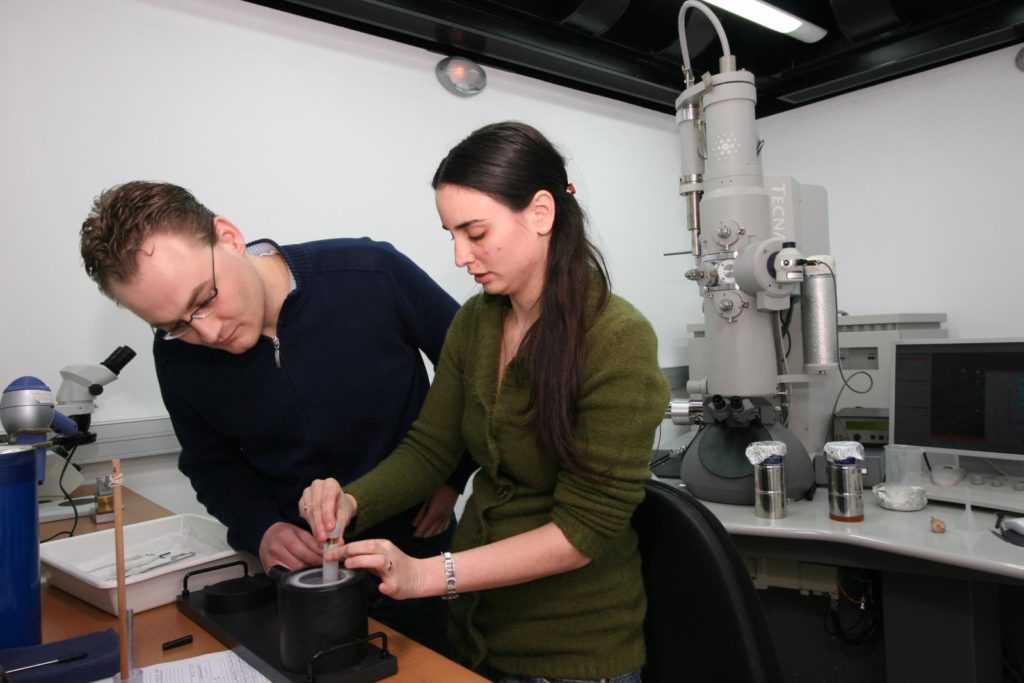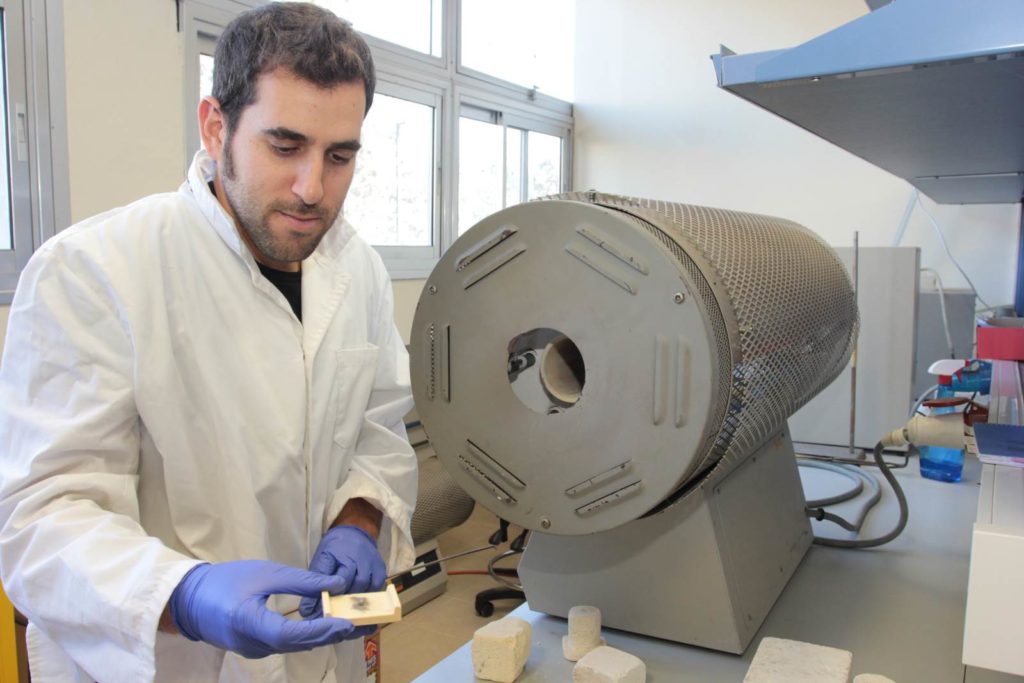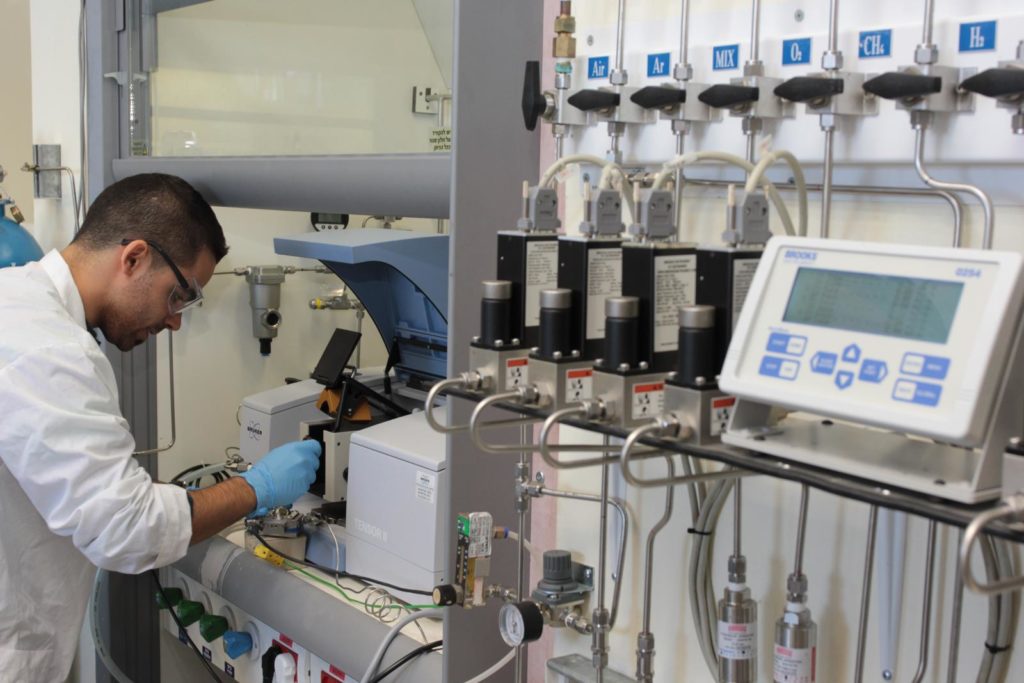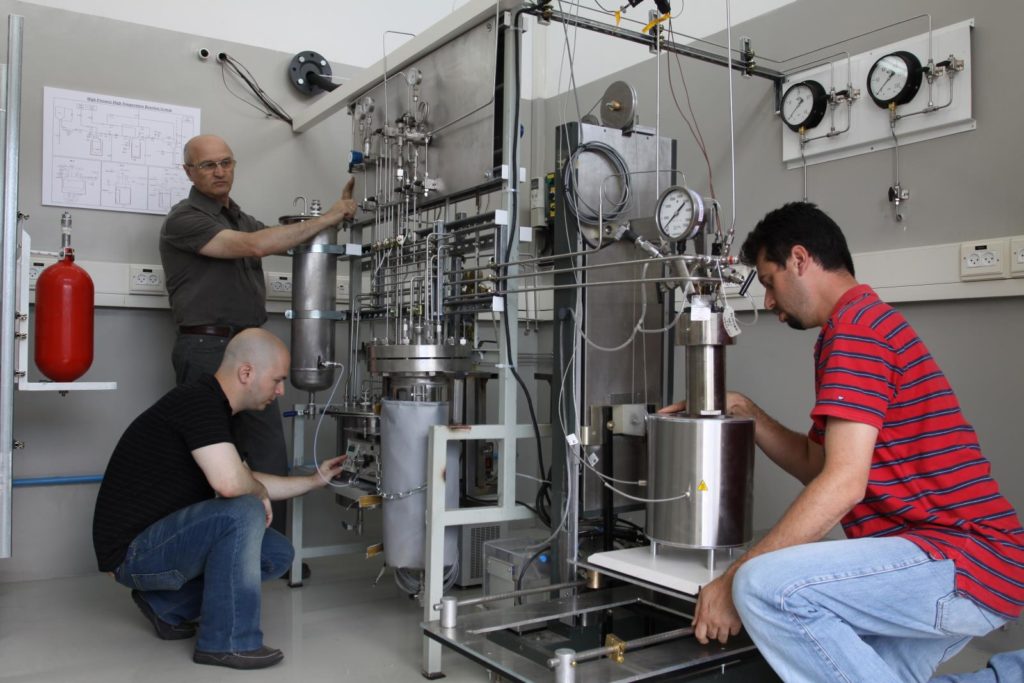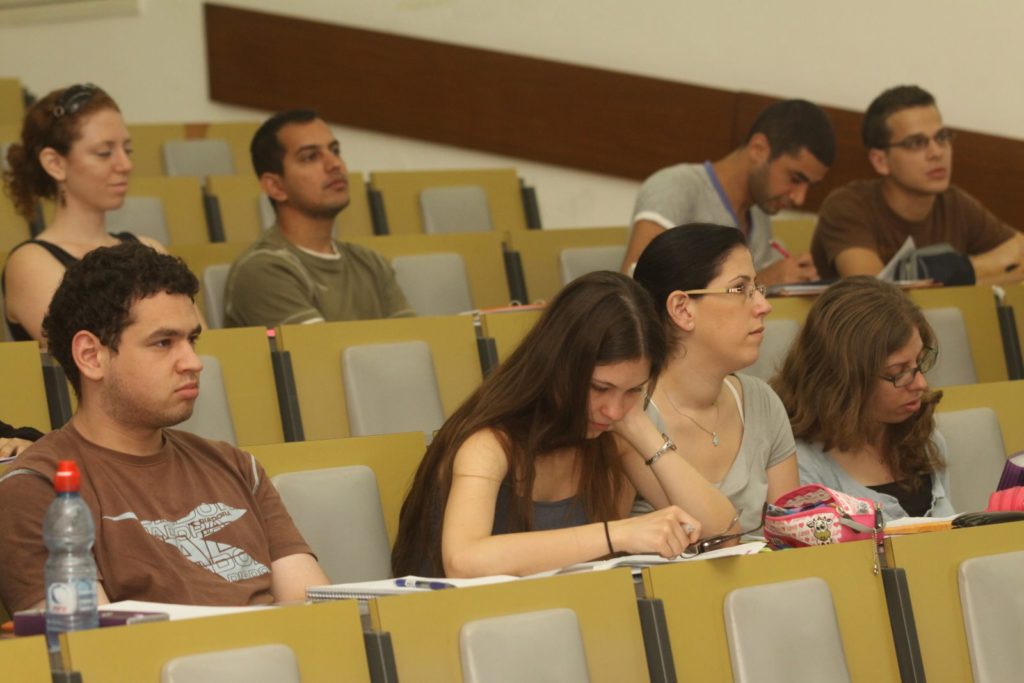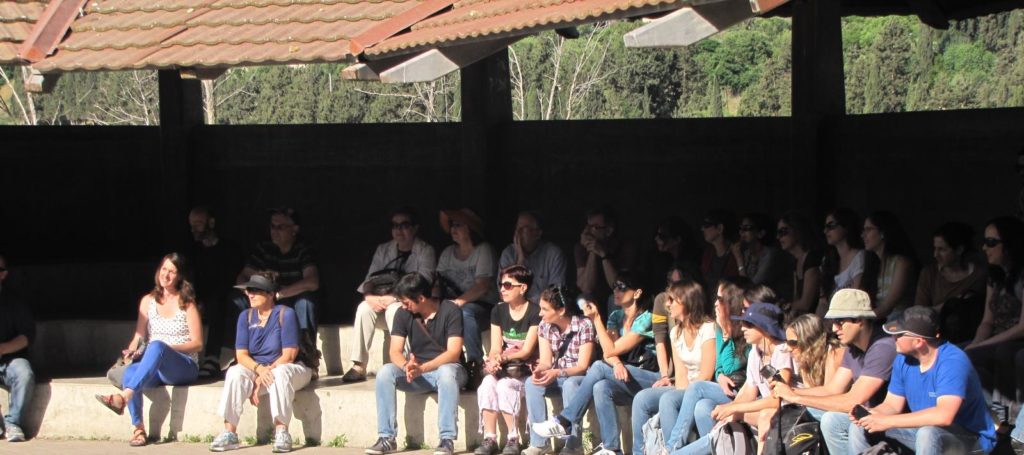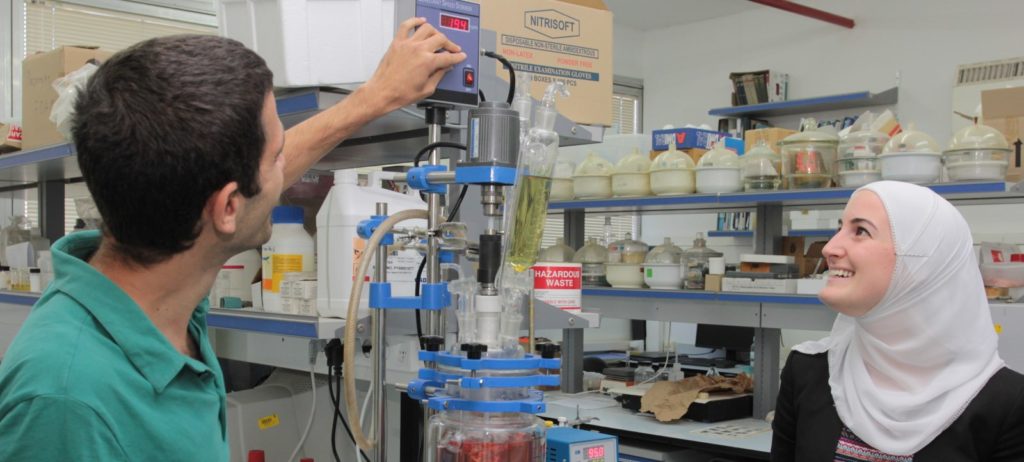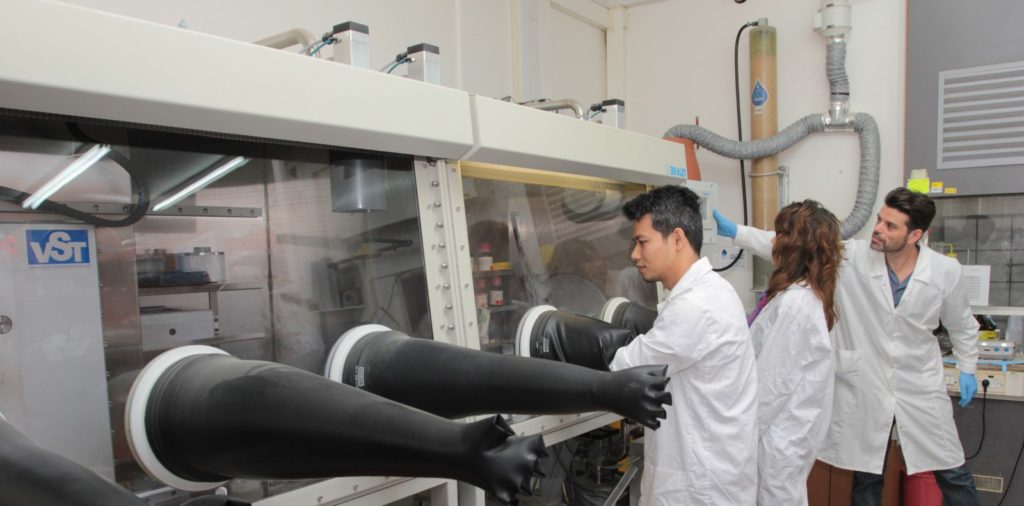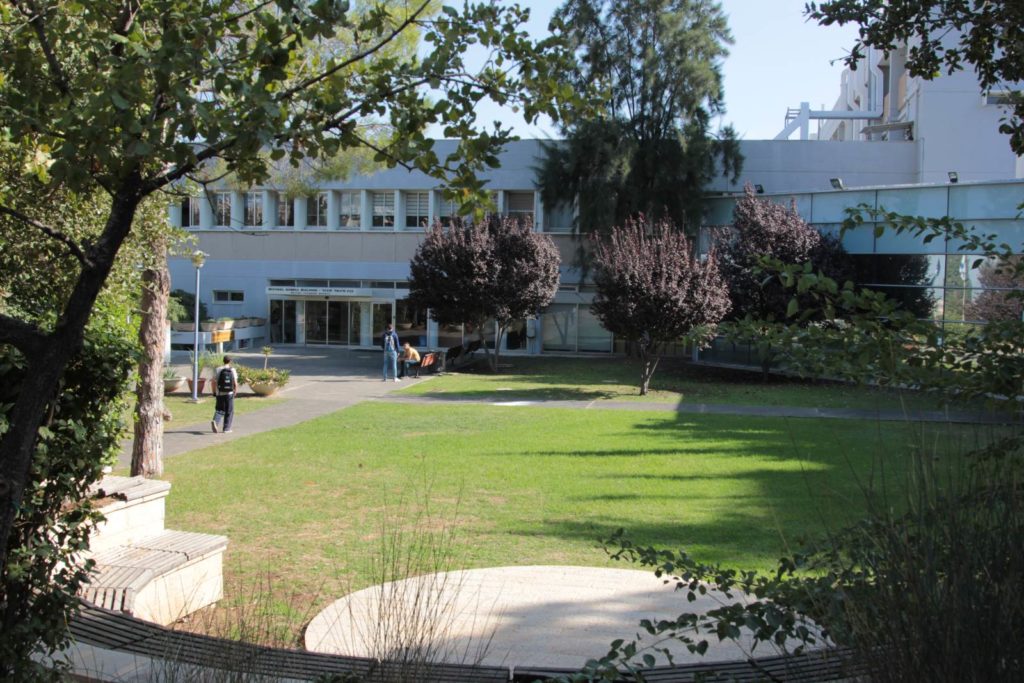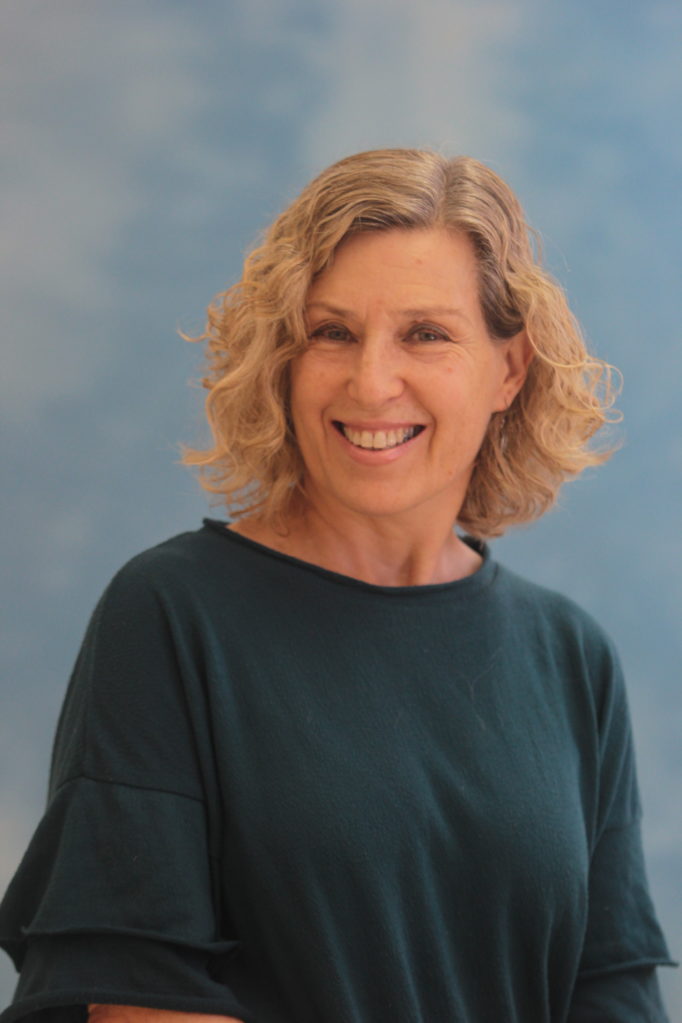
Uncategorized
Creating 3D nanostructures for the next generation of nanotechnology

Asst. Prof. Tamar Segal-Peretz develops nanotechnology for conserving resources and streamlining diverse technologies: from computers and optical devices to efficient membranes for water treatment.
February 2022
After completing a BSc in Biochemical Engineering at the Technion, Tamar Segal-Peretz worked in industry and felt she wanted to delve deeper into research. She decided to pursue a graduate degree. “I felt that graduate studies would open new doors for me. Therefore, I decided to return to the Technion and joined one of the first classes of the Interdisciplinary Program for Nanoscience and Nanotechnology, in Prof. Gitti Frey’s research group at the Department of Materials Science and Engineering,” says Tamar. “During my PhD research, which dealt with the self-assembly of polymers to create solar cells, I realized that I really enjoy studying and discovering new things, as well as teaching courses and mentoring students in the lab. Towards the end of my graduate studies, I decided to pursue an academic career. The field of polymer self-assembly was very attractive to me, so I joined Prof. Paul Nealy’s lab at the University of Chicago and Argonne National Laboratory as a postdoctoral researcher focusing on this subject. We studied the integration of self-assembled polymers into advanced computer chip manufacturing processes.” After three years in Chicago, Tamar returned to Israel with her family and joined the Technion’s Department of Chemical Engineering as a faculty member, where she opened The Functional Nanostructures and Advanced Imaging Lab. In addition to research and teaching in the fields of nano, polymers, electron microscopy, and separation processes, Tamar also established a Women’s Forum in Chemical Chemical Engineering for graduate students at the department, where senior and trainee academic women meet, share advice, and develop ways to support each other.
The research conducted in Asst. Prof. Segal-Peretz’s group is focused on the development of nanotechnology to reduce resource consumption and streamline various technologies. “The expanding world population and our responsibility towards the planet requires us to find efficient ways to utilize the existing resources while preserving the environment,” says Tamar. “The vast majority of the processes that take place in technological devices occur at the nanoscale – electrons, photons, and molecules at this scale dictate how devices work – from computers and optical devices to water treatment membranes and heat management devices. Our studies are based on the formation of nanometer structures from polymers (for example, by self-assembly of block co-polymers) and on the growth of inorganic materials on and inside polymers, using the atomic layer deposition (ALD) technique. “Growing inorganic materials within organic polymers allows us to tailor the properties of the final product, as well as to devise innovative ways to create durable and strong nanostructures from soft and easy-to-apply polymers.” The research group frequently uses electron microscopy to characterize nanostructures with expertise in 3D nanomaterial characterization. Three-dimensional characterization at the nanoscale allows researchers to accurately understand the structures they create, and thus optimize the design.
For example, these methods can produce membranes that repel oil molecules – thus protecting themselves from contamination, as well as membranes for molecular separation for nanometric pollutants molecules removal such as drugs residues. Other topics studied at the lab are the fabrication of ceramic fibers with a 3D structure from simple polymer fibers – which allows for excellent control over the fibers’ structure and composition, three-dimensional characterization of nanostructures for the semiconductor industry (in collaboration with Applied Materials and Intel), and development of structures and materials with improved mechanical properties that can be used for energy absorption and durable protective layers. These technological developments enable new types of 3D nanostructures- one can think of it as 3D printing at the nano-scale.
Segal-Peretz’s research group works in cutting edge, diverse fields Until a few years ago, scientists didn’t think that inorganic materials could grow within polymers using ALD (atomic layer deposition) technology, but research in Tamar’s group and other groups around the world has opened a host of new possibilities for creating hybrid materials with improved properties. “In five to ten years, I expect we will be able to perform ALD in polymers with a wide range of materials and in a scalable manner (such as roll-to-roll), leading to efficient manufacturing of functional 3D nanostructures. In computer chip manufacturing, for example, devices are becoming more complex; thus, a 3D understanding at the material level is vital and there is a great need for new 3D nanofabrication technologies. A new field that the research group is now entering is biodegradable polymers and “green hybrid materials that will reduce plastic pollution while maintaining plastic-like performance.
“I strongly believe in collaborations because today’s research is very multidisciplinary. It is crucial to work with experts from different fields and contribute our expertise to other groups. It is also very fun and instructive, both for me and for the students,” says Tamar. The research group collaborates with Prof. Guy Ramon (Civil and Environmental Engineering), Prof. Eyal Sussman (Mechanical Engineering), Prof. Noy Cohen (Science and Materials Engineering), and Asst. Prof. Shady Farah and Prof. Slava Freger from the Technion Department of Chemical Engineering. At the national level, there are collaborations in the field of batteries with Prof. Daniel Sharon of The Hebrew University of Jerusalem. The group also has many international collaborations (with groups in Germany and United States). “It’s fun to work with people at the forefront of global research. In addition, we collaborate with a variety of companies from the Israeli industry – Shamir Optical Industry, Applied Materials, Intel, and Elbit.”
The main methods used in the group are techniques for polymer engineering (self-assembly of a block co-polymers to create nanometer structures in thin layers and in particles, electrospinning, 3D printing, and working with polymer membranes), together with techniques for growing inorganic materials on and inside polymers using ALD-based processes. The ALD enables a solvent-less procedure, which is significantly more environmentally friendly than working with organic solvents. ALD processes allow precise (sub-nanometer) control over the thickness of the material and its nature. “In addition, we perform many characterizations using electron microscopy methods: scanning electron microscope (SEM), transmission electron microscope (TEM), and also a microscope capable of performing precise cutting (focused ion beam, FIB).”
Asst. Prof. Segal-Peretz’s research group has students with diverse academic backgrounds, mainly in Chemical Engineering and Materials Science and Engineering. Courses on polymers, solid-state and microscopy are good preparation for working in the group, but even those who arrive without prior knowledge of these topics can thrive and deepen their knowledge while working in the lab. “I believe that a graduate degree (MSc/PhD) is a great opportunity to acquire new skills and learn new fields. “Nourishing your research project is hard work, and it’s a wonderful feeling when you succeed in creating new scientific knowledge or in developing new technology. The Technion Department of Chemical Engineering is a great home to work in while being at the forefront of cutting-edge science. I invite ambitious candidates to join us!”
Tamar advises students who are debating between several areas of research: “It is important to choose a research topic that interests you and that is meaningful to you, as well as to choose a group and a mentor that you will enjoy working with during the graduate studies period.”
Chemical Engineering and Process Engineering – From the Lab to Startup Companies

Prof. Gidi S. Grader and his research group study and develop ceramic materials with applications in the field of energy and produce “green” hydrogen with high efficiency. Prof. Grader recently received the Prime Minister’s Prize for Global Innovation in Smart Mobility and Alternative Fuels for Groundbreaking Research.
While studying for his BSc degree in Chemistry and Chemical Engineering at the University of California, Berkeley, studying organic chemistry was based on memorizing hundreds of catalytic chemical reactions and respective reaction conditions. Chemical Engineering, on the other hand, was based on a basic understanding of processes and real-workd problems. “I liked both directions, and worked a bit in a chemistry lab. After two years at Berkeley, studying organic chemistry, I decided to return to Israel to serve in the IDF for three years in the Golani Brigade,” says Gidi. “After the Army, when I went back to Berkeley to finish my studies, to my amazement I discovered that I had forgotten all the organic chemistry, and really had no will to memorize all the material once again. And so, I happily decided to continue in Chemical Engineering which had already attracted me much more.”

“I did my doctoral studies at Caltech, where I joined Prof. John Seinfeld’s wonderful research group that studied the behavior of dust particles called ‘aerosols’ in the atmosphere. I built a unique experimental system there that allowed me to study the properties of a single particle. I met my wife during that time, and got married before finishing my PhD. While working at Bell Labs, I was exposed to the synthesis of liquid-medium particles, sol-gel processes, and ceramic materials,” says Gidi. After 4 years (in 1990) and with two children, they decided to return to Israel, to the Technion.
As a faculty member at the Technion Department of Chemical Engineering, Gidi works with graduate students (and even undergraduate students in various settings) on innovative ceramic materials research studies, especially for energy applications, and on chemical processes related to hydrogen production. “I anticipate that the field of renewable energy will strengthen and gain significant momentum in the coming years. These issues are extremely diverse and also include the production of innovative materials and processes for environmentally-friendly burning of clean fuels, production of chemicals form carbon dioxide and natural gas in environmentally-friendly processes, and hydrogen production.”
Gidi has several notable collaborations that support the various research directions in his group. Within the Technion, there has been a long-standing collaboration with the group of Prof. Avner Rothschild from the Department of Materials Science and Engineering on the production of hydrogen from water, with Prof. Wayne Kaplan from the Department of Materials Science and Engineering on the effect of electric field on sintering of ceramic materials, and with Prof. Oz Gazit from the Department of Chemical Engineering as part of the development of catalysts and processes for creating molecules with added value from carbon dioxide and methane. Gidi also works with Rafael, the Hebrew University in Jerusalem, and with partners from Hanover, Germany and Lille, France, and with University of Louisiana. There is also a project with a French company called Hutchinson on the preparation of piezoelectric fibers. All of these projects involve graduate students from Gidi’s group.
Gidi’s research group mainly uses chemical methods and sol-gel processes for the synthesis of ceramic materials. This allows the preparation of nanometer-sized suspensions and powders that are used to create fibers or ceramic films, finally forming multilayer bodies. These materials undergo thermal treatments at high temperatures where they decompose, sinter, and reach their desired final structure. The final products are unique materials such as transparent ceramics and materials with extremely high thermal resistance.
In 2021, Prof. Gidi Grader, together with Prof. Avner Rothschild, won the Eric and Sheila Samson Prime Minister’s Prize for Global Innovation in Smart Mobility and Alternative Fuels, the world’s largest award in the field of alternative transportation fuels. This award was granted to the two researchers for their joint study of an alternative process for producing hydrogen from water, performed under the Grand Technion Energy Program (GTEP) and the Solar Fuel ICORE program (Israeli Center for Research Excellence). As part of these research programs, Gidi became closely acquainted with the research of Avner Rothschild, who studied the splitting of water in a photoelectrochemical cell. Avner’s cell contained two electrodes in one vessel, with a membrabe separating them. Gidi proposed to split the system so that the hydrogen and oxygen would be formed in two separate cells, without the membrane. Dr. Avigail Landman, a former graduate student of Gidi under the joint mentoring of Avner began working on this project. Initially the team worked on a direction that did not lead to positive results, since the hydrogen and oxygen electrodes (cathode and anode) were very far apart. The first breakthrough came after the idea of using auxiliary electrodes came up, where on the hydrogen side the auxiliary electrode is charged, and on the oxygen side the auxiliary electrode discharges. This breakthrough led to filing the first patent. It took another three years of R&D until the research team to publish the breakthrough in the prestigious journal Nature Materials. During the study, Avigail noticed that when the auxiliary electrode stood charged for several days (over the weekend, for example) it spontaneously discharges. The research team immediately realized that this discharge process can happen chemically without electricity and that it can be accelerated at a high temperature. Thus came the second breakthrough and the creation of a two-stage, electrochemical-thermochemical process, where in the first stage the hydrogen is produced at a low temperature while charging the anode, and in the second stage oxygen is chemically produced by heating the anode. The process is called E-TAC (Electrochemical-Thermally Activated Chemical). There is no need for a membrane in this process as hydrogen and oxygen are formed at different times, and the incredible hydrogen production efficiency is close to 99%. The team filed another patent for this process and published the work in another paper in 2019 in Nature Energy.
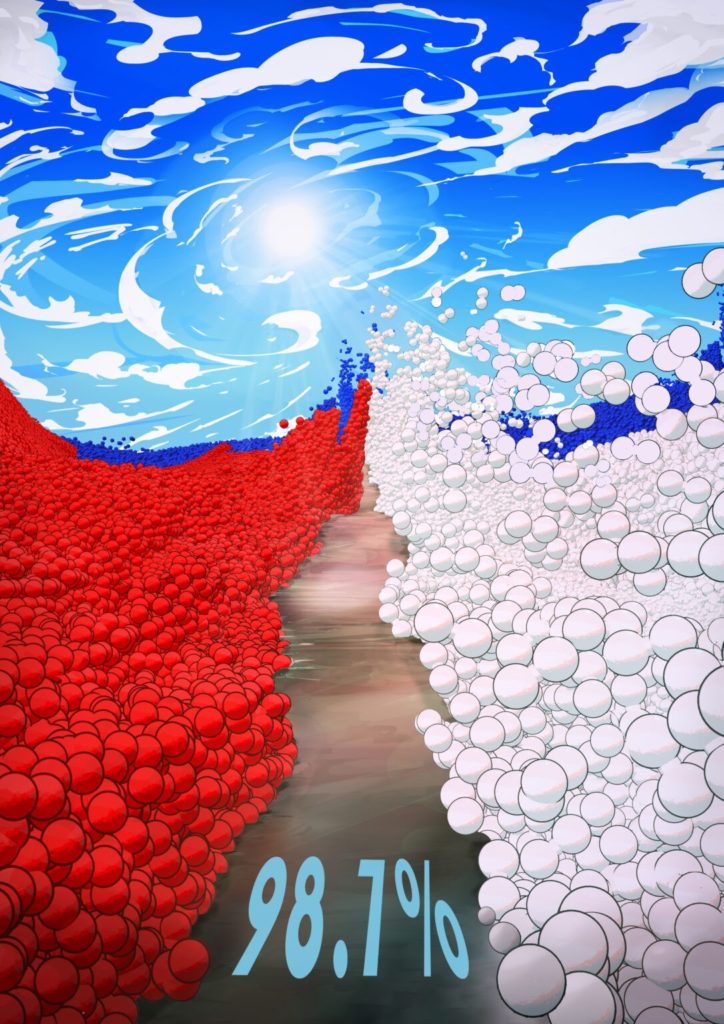
Gidi had a start-up company called Cellaris based on a unique foaming process developed in his lab, which can produce ceramic foams with a void fracture of about 98% (i.e., a durable material that is mostly air voids), which was sold to an Indian company that received the rights to use the process. In 2018, Prof. Gidi Garder, Prof. Avner Rothschild, and Dr. Chen Dotan founded H2Pro, which is based on the E-TAC process described above. The company started operating at the Technion with a small staff of 5 people, and then moved to its current site in Caesarea. The company deals with scale-up of the production process to industrial dimensions. Today, the company already has over 80 employees, many of them are Technion alumni. Just recently, a $75 million investment round was concluded that will enable the company to operate in the coming years and establish a manufacturing plant in the Galilee during 2023.
“There is no doubt that Process Engineering is at the core profession of Chemical Engineering,” says Gidi. “This core sets our discipline apart. The ability to scale-up chemical processes is a key pillar in the success of the ventures I have described, and in the success of other startups and the existing process industry. I highly recommend undergraduate students interested in graduate degrees to take the ‘final research’ course or a research project offered in our department, or work as a student in the labs of faculty members.”
“It is a great privilege to teach and perform exciting research at the Technion and at our department in particular with excellent students for many years,” says Gidi. “Our department is very family-like. We have been blessed with wonderful students who care about their friends, and the department. We have a lot of good will and a willingness to help each other, and we must preserve these qualities. I’d like to take this opportunity and ask our students to be our ambassadors outside the Technion, spreading the work about the exciting work that awaits additional candidate students.”
056379 Membrane Process Laboratory
An elective course designed for both undergraduate and graduate studies and is held in a new format in a dedicated laboratory built for it. During the course, the teams will practice different and varied membrane processes such as: reverse osmosis, ultrafiltration, microfiltration, gas separation and pervaporation.
Experience in these fields is an important tool in both research work and industry.
054317 Laboratory in Thermodynamics B
This laboratory is part of a theoretical course in Thermodynamics B and replacing the laboratory of physical chemistry given in the past. The course is intended for students of chemical engineer ing and environmental engineering. The lab exercises were specially constructed and adapted to the material taught in class. Among other things, they will include a practice of the following topics:
- Henry’s Law and Fugacity
- Azeotrope
- Property changes of mixing (mixture properties)
- Phase separation
054316 Laboratory in Thermodynamics A
This laboratory is a part of a theoretical course in Thermodynamics A and replacing the laboratory of physical chemistry given in the past. The course is intended for students of chemical engineering and environmental engineering. The lab exercises were specially constructed and adapted to the material taught in class. They will include practice of the following topics:
- Heat capacity
- Ideal gas law
- Joule-Thomson effect
- The equation of state and the critical point
- Heat pumps
054400 Chemical Engineering Laboratory 2
Compulsory course for undergraduate students in the Faculty of Chemical Engineering. This laboratory is a continuation course of a laboratory for chemical engineering 1. During the course, students are practicing separation processes and reactors that were learnt in theoretical courses of reactor design and separation principles.
During the course, students experience teamwork and the operation of industrial systems on a laboratory scale, analyzing the results obtained and presenting a scientific presentation.
Some of the topics taught in the course are:
- Various reactors
- Chromatography
- Ion exchange
And many others.
054310 The Chemical Engineering Laboratory 1
Compulsory course for undergraduate students in the Faculty of Chemical Engineering. During the course the students practice the principles of heat transfer and flow processes. The material taught in theoretical courses of principles and separation processes.
During the course, the students experience teamwork and the operation of industrial systems on a laboratory scale, analysis of obtained results and submission of a scientific report.
Some of the topics taught in the course are:
- Flow processes
- Conduction and convection heat transfer
- Filtration
and many others.
054369 Polymer engineering Lab
An elective course designed for both undergraduate and graduate studies.
As part of the course, basic topics in the field of polymers will be covered:
- Polymerization and crosslinking
- Polymer characterization methods
- Polymer fabrication processes
These topics are the basis for research and / or industrial work in the field of polymer engineering.
The polymer industry in Israel is diverse and offers many employment opportunities.
The course is given in the format of practical laboratories.
Functional Nanostructures and Advanced Imaging
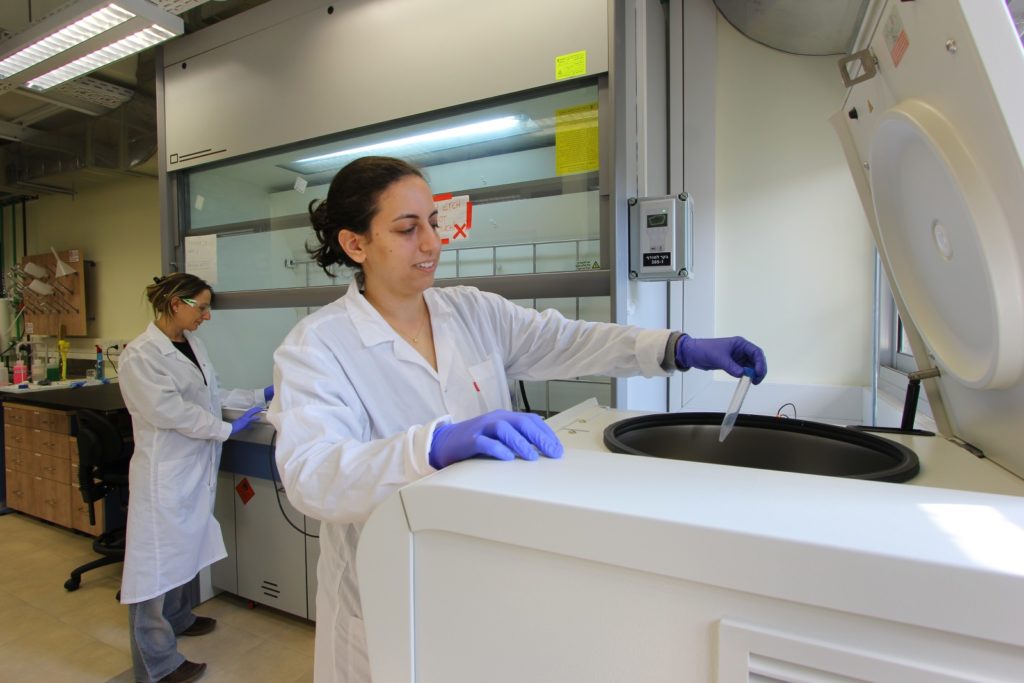
Functional nanostructures are the enabling basis for today’s and tomorrow’s nanotechnology. Our research group focuses development of novel functional nanostructures in a wide array of applications, ranging from semiconductor nano-manufacturing and optical materials to energy and clean water production. We combine research in polymer systems, block copolymer self-assembly, inorganic materials growth inside polymers, and complex liquid-nanoparticles systems together with advanced characterizations technique such as TEM imaging, 3D characterization with TEM tomography, and X-ray scattering to understand and control the next generation of functional nanostructures.
Functional Nanostructures and Advanced Imaging Lab
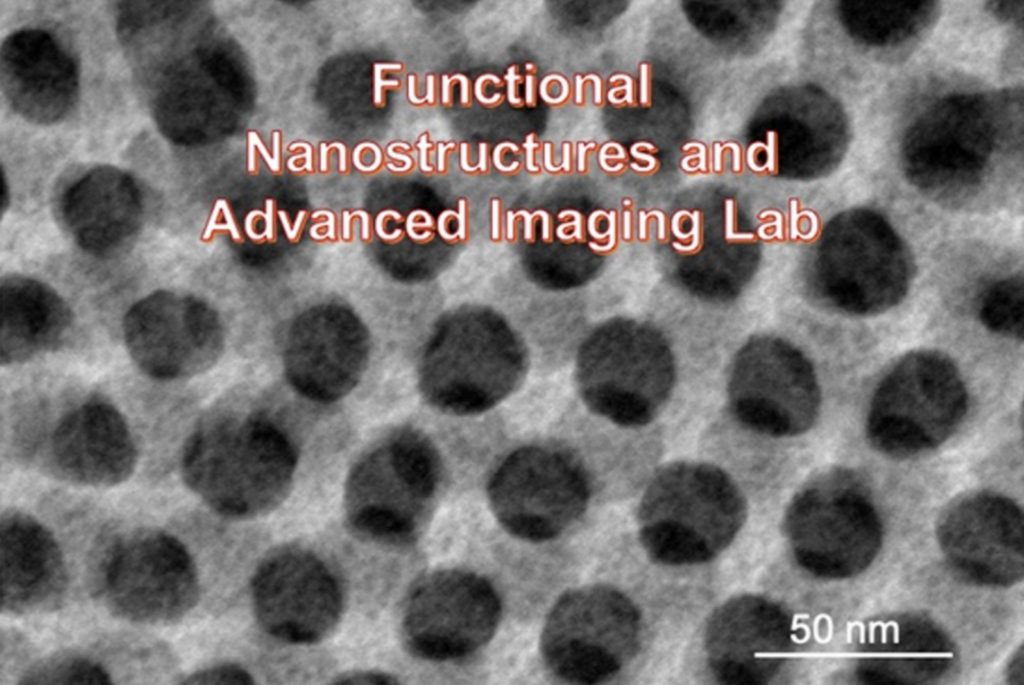
Functional nanostructures are the enabling basis for today’s and tomorrow’s nanotechnology. Our research group focuses development of novel functional nanostructures in a wide array of applications, ranging from semiconductor nano-manufacturing and optical materials to energy and clean water production. We combine research in polymer systems, block copolymer self-assembly, inorganic materials growth inside polymers, and complex liquid-nanoparticles systems together with advanced characterizations technique such as TEM imaging, 3D characterization with TEM tomography, and X-ray scattering to understand and control the next generation of functional nanostructures.
הנדסת ביוטכנולוגיה
הנדסת ביוטכנולוגיה והנדסה כימית – מה ההבדל?
הנדסת ביוטכנולוגיה היא תחום חדשני המשלב ידע מתחומי הביולוגיה וההנדסה על מנת ליצור ידע מעשי ולפתח מוצרים בתחום הרפואה, החקלאות והמזון.
מספר דוגמאות לביוטכנולוגיה מודרנית הן פיתוח תרופות ונוגדנים, טכנולוגיות של הנדסה גנטית, הנדסת רקמות ועוד. למעשה, הן במסלולי הלימוד המקנים תואר ראשון בהנדסת ביוטכנולוגיה והן במסלול הלימוד להנדסה ביוכימית, לומדים קורסים בביולוגיה וקורסים בהנדסה, אשר השילוב ביניהם מכשיר את הבוגר לעיסוק בתעשיית הביוטכנולוגיה.
אם כך, מהו ההבדל בין הנדסת ביוטכנולוגיה להנדסה ביוכימית?
בפקולטה להנדסה כימית אנו מכירים בעובדה שבעוד שתעשיית הביוטכנולוגיה היא תעשייה מודרנית ומרתקת, מספר אפשרויות התעסוקה בתחום זה עדיין מוגבלות. זאת ועוד, מרבית המעסיקים הם חברות הזנק קטנות (סטארט-אפים) אשר אופי העבודה בהן אינו מתאים לכל אחד. לכן המהנדסים הביוכימיים לומדים קורסים בסיסיים בהנדסת תהליך, בדומה למהנדס כימיה, בנוסף להכשרה רחבה בביולוגיה וביוטכנולוגיה. במידה וירצו בכך, או לא ימצאו תעסוקה הולמת בתחום הביוטכנולוגיה, בוגרי הנדסה ביוכימית יוכלו למצוא תעסוקה בתחומים אחרים של ההנדסה הכימית. כך למשל ישנן בשוק כיום מספר חברות סטארט-אפ בולטות שיזמו חברי סגל בפקולטה ובהן עובדים סטודנטים בוגרים שלנו, לדוגמא:
Advanced Medical Solutions Israel (Sealantis) ltd מפתחת דבקים ליישומים רפואיים אשר פותחו בהשראת מנגנון ההדבקה של האצות. הטכנולוגיה היא פרי מחקר שהתקיים במעבדתה של פרופ’ חבצלת ביאנקו-פלד, אשר הצריך שילוב של עולמות ידע שונים מתחום ההנדסה הכימית, הנדסת החומרים והביוטכנולוגיה. קו המוצרים של החברה כולל דבקים יעילים, קלים ליישום ובלתי רעילים ליישומים שונים ובפרט מניעת דימומים ומניעת דליפות ממערכת העיכול לאחר ניתוחים.

- מעוניינים לשמוע עוד פרטים ולקבל הכוונה אישית בעניין לימודי הנדסת ביוטכנולוגיה? לחצו כאן.
The Laboratory of Nanomaterials Based-Devices
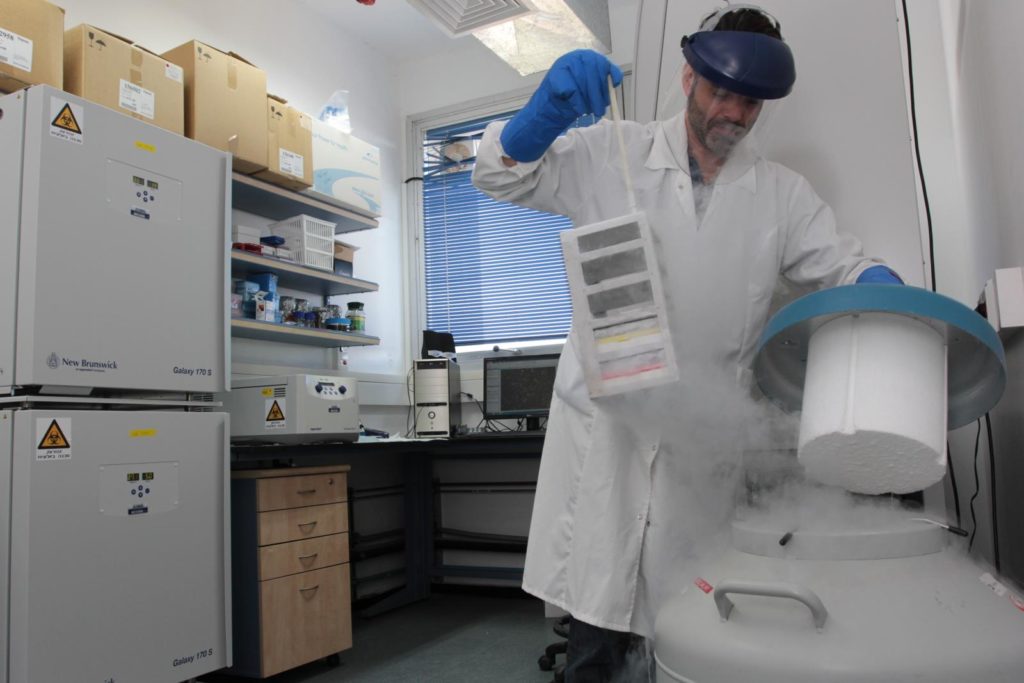
Highly multi-disciplinary in nature, LNBD research combines knowledge from diverse fields, among them microelectronics, nanotechnology, microfluidics, machine learning, biochemistry, medicine and genetics. Borrowing from these different disciplines, the laboratory develops novel solid-state and flexible devices/sensors, as well as electronic sensory nanoarrays for application in various areas.
Healthcare diagnosis, consumer electronics, robotics, sports and fitness, environmental monitoring and other fields all stand to benefit from work at the LNBD. The lab’s comprehensive approach comprises materials and device development, system integration, testing in lab and clinical/technological environments, practical application (disease diagnosis), widespread screening of high-risk factors and exploitation of project results/hardware.
NANOMATERIAL-BASED DEVICES
The LNBD develops and employs different nanomaterials, such as metal nanoparticles, poly aromatic hydrocarbons, silicon nanowires and carbon nanotubes, in a variety of electronic devices. Control over the size, shape, structure and morphology of such nanospecies enables the design of complex sensing functions that can address practical requirements from sensing platforms. In addition, both fabrication using bottom-up wet chemistry approaches, and the utilization of organic material coatings are simple. This enables the use of nanomaterials for different applications. The LNBD focuses on the following applications:
Nanomaterial-based sensors: R&D for use in artificially intelligent nanoarray and electronic skin applications.
Self-healing sensors: development of electronic sensors with engineered structures that enable self-repair and full functionality following mechanically destructive damage.
Printed electronics: development of new printing and self-assembly techniques that enable the optimal implementation of nanomaterials in electronic devices.
Volatile Biomarkers
The LNBD group conducts studies in different aspects of volatile biomarkers, focusing on breath and skin samples. Exhaled breath and skin headspace can be obtained non-invasively, are suitable for high compliance, and provide a matrix of relatively low complexity. In this effort, the lab is developing and characterizing artificially intelligent arrays of solid-state and flexible sensors for the detection and classification of various diseases in a non-invasive, fast and inexpensive manner, with low energy consumption. In addition to conducting R&D on sensing devices, lab researchers examine the developed devices via actual clinical trials on diverse diseases, malignant, neurodegenerative or infectious. These trials involve human volunteers together with in-vitro and in-vivo studies using different cell lines and animal models. In parallel, the lab assesses theoretical pathways and transport of different VOCs/chemicals from the internal, toward the external, side of the body.
The Laboratory for Heterogeneous catalysis and advanced materials
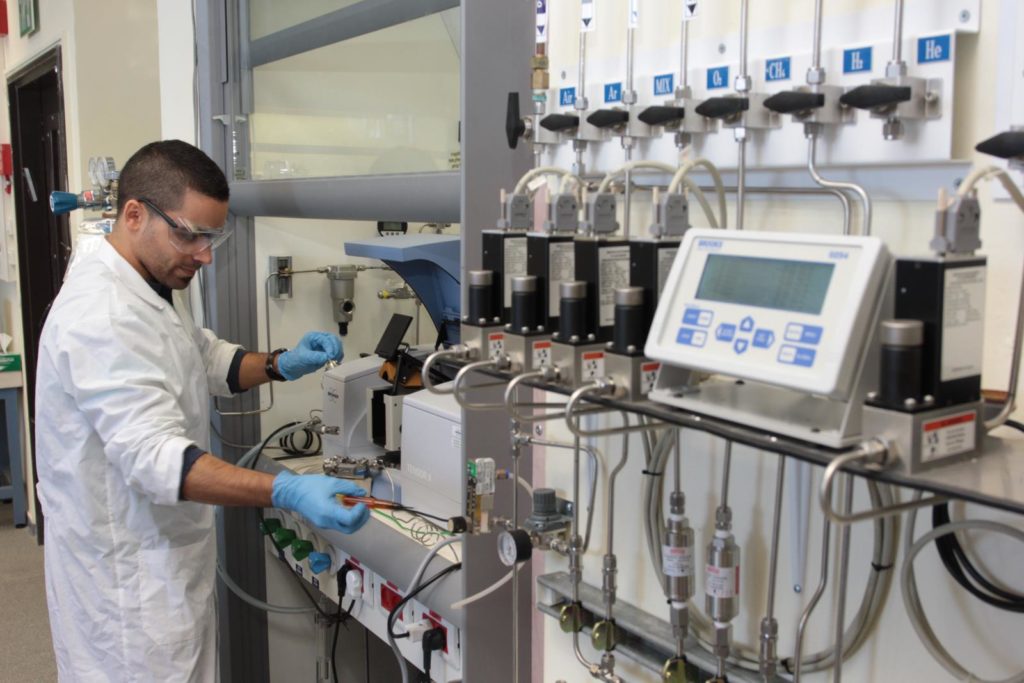
Our team is passionately working towards the development of new advanced heterogeneous catalysts and functional materials for energy and environmental applications. We try to look for new innovative design concepts by which our material exemplifies superior performance. This line of research is pursued by studying, understanding and manipulating reactivity at inorganic and organic surfaces. To make our new materials we use a combination of organic, inorganic and polymer chemistry techniques. These materials are then tested under reaction condition with a clear preference to running reactions under spectroscopic in-situ operando conditions.
Our group is always looking for inspiration in natural systems (i.e. enzymes), from which we can adopt mechanisms and concepts and incorporate them into our materials design.
SAXS X- ray Scattering Lab.
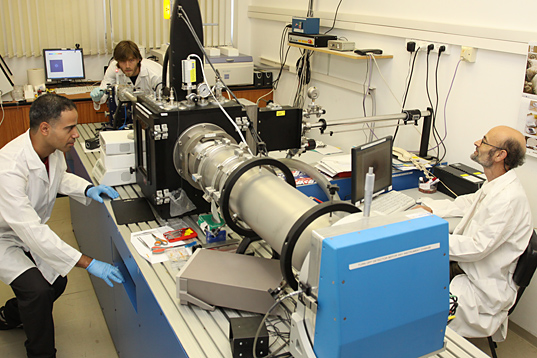
Small-angle x-ray scattering (SAXS) is a well-established technique for studying structural features of colloidal size (1-100 nm). When x-rays are transmitted through a sample, the interaction of radiation with matter results, among others, in scattering events. The waves scattered by all electrons in the sample at a given angle interfere with each other to produce a point in an interference pattern. Appropriate analysis of SAXS data supplies wealth of structural information, such as size, shape, internal structure and mass of particles, particle size distribution in polydispersed systems, and fractal dimensions in disordered systems. The small-angle X-ray scattering facility at the Technion has been set up in 1988. It has been used continuously by researchers, graduate and undergraduate students of our department as well as from other Departments in Israel, U.S., Europe and Japan. Several Israeli Industries have had projects in association with our facility. The breadth of the field, which can be approached by this technique, is demonstrated by some of our research topics. One major area of interest is polymer solutions and gels.
We have studied inhomogeneities in polymer gels, inter-polymer complexes and thermo-reversible gelation on polymer solutions. We are investigating various Colloids and surfactants systems, for example the effect of interaction with polymers on the size and shape of surfactant micelles in water, evaluation of micellar dimensions of novel surfactants, and the inner structure of multicomponent polymeric latices as a function of composition and method of preparation. In the area of Ceramics and Inorganic Solids we explored the relation between processing parameters and the evolution of microstructure in novel procedures for preparation of alumina gels.
We have studied the effect of ion-irradiation on amorphous SiO2 as a model for the ageing of glassy materials used in nuclear waste disposal, and the structure of zeolite precursors. Evaluation of the microstructure in Solid Polymer Blends, Fibers and Composites is another important aspect of our work. We are determining the microstructure of semi-crystalline polymer fibers under the combined effect of stress, temperature and solvent activity, the effect of reactive compatibilizers on the interface characteristics in polypropylene/liquid-crystal polymer blends and characterizing the size and amount of voids in fiber-reinforced composite materials.
Laboratory for Membranes and Water Technology
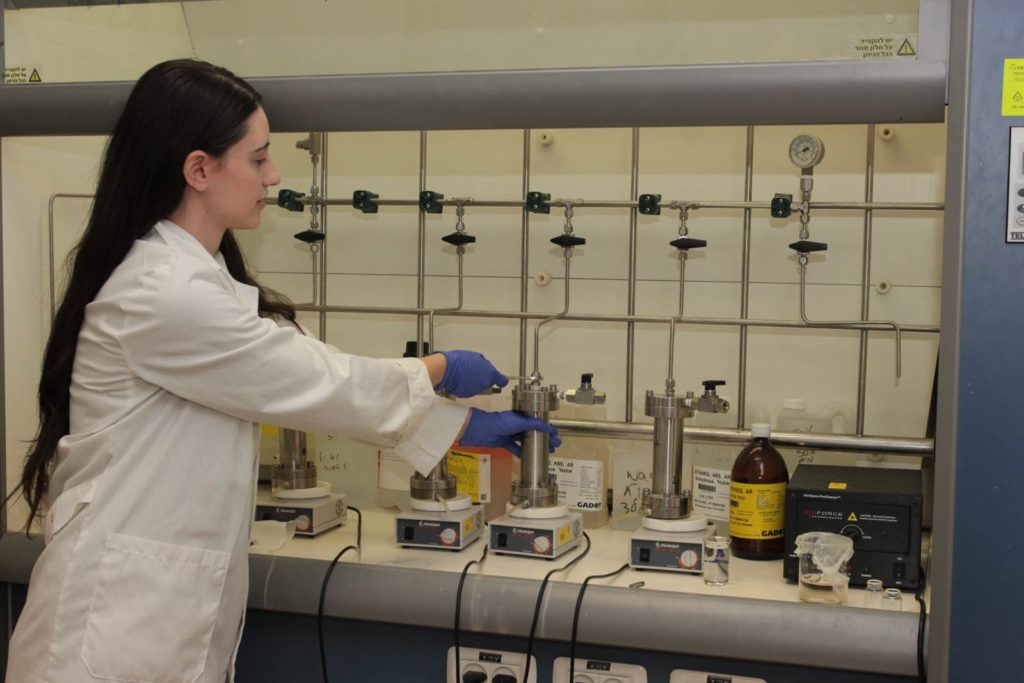
The Laboratory focuses on fundamentals, development and applications of separation membranes, mainly, polymeric membranes for water and fuel cells, including mechanisms, modeling, advanced characterization, surface phenomena, polymeric materials, interactions between membranes and bacteria and particles, development of novel membranes and membrane modification for improved performance. Equipment includes AFM, FTIR, HPLC, QCM-D, Zet-potential analyzer for surfaces (SurPASS), equipment for microbiological work including a multi-purpose fluorescent microscope, electrochemical equipment etc.
Surface and Colloids Laboratory
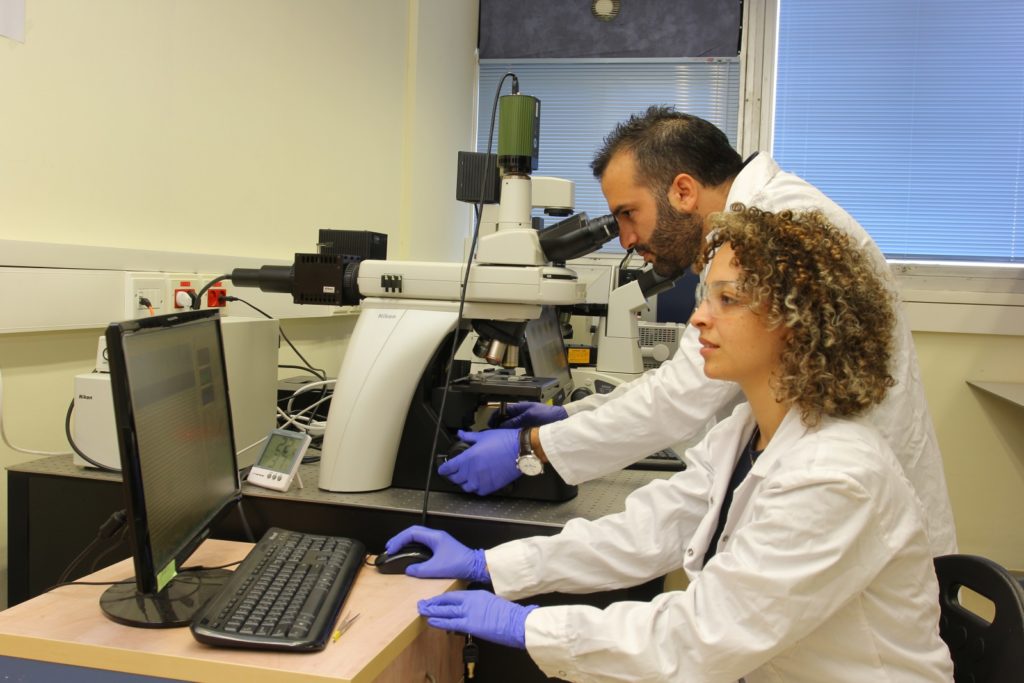
Our research group is composed of both experimentalists and theoreticians. In our experiments we employ microfluidic and lab-on-a-chip platforms to generate, observe, and measure different surface phenomena, which are of value to our projects. In our theoretical work we combine molecular forces, transport phenomena, and continuum density functional theory to study the structure and dynamics of complex liquids. We explain experimental results in our lab and in other labs. In particular, we are interested in several topics in the field of colloids (nano- and micro-particles) and surface phenomena. We work on passive and active oil/water phase separation, smart coatings of solids and liquids, and ion structures in the nanometer-thick electrical double layer in the presence of acoustic waves. Below we give a more detailed account of each project.
Students and postdoctoral fellows who are interested in colloids and surface science are welcome to contact us.
Passive and active oil/water phase separation
Small scale, efficient, and affordable unit operations for water recovery are necessary for local pre-treatment of contaminated water and in particular for separating oily additives from water in domestic housing and industry. This is especially of value in small and remote communities, where large scale water treatment facilities are not available and where the reclaimed water could be locally used for agriculture or domestic benefits. We study the passive and active separation of oil, water, and surfactant mixtures in the presence of a specially designed surface chemistry on solid surfaces, and in the presence of high frequency acoustics.
Smart Coatings
Several startup companies produce smart coatings and electronic circuits by coating surfaces with mixtures of conductive nanoparticles in volatile carrier liquids. Many times, they employ particle self-assembly strategies. Molecular forces in such coating systems determine the coating process alongside the flow and evaporation of the carrier liquid. We study the connection between molecular forces, coating flows, and the self-assembly of nanoparticles therein to improve the spatial resolution of coatings and nanoparticle deposits. In addition, we study new approaches for the active control of the coating process.
The electrical double layer in the presence of acoustic waves
Electrical double layers (EDLs) of ions are thick layers of ions which appear next to charged surfaces in water and traverse into the liquid for several nanometers. This is an important mechanism in chemistry and biology. It is responsible for the stability of complex liquids such as suspensions and emulsions, for the structure of large molecules such as proteins, and for energy storage systems such as super-capacitors. We study the electrokinetic contribution of MHz-frequency acoustic waves to the structure of EDLs. By generating acoustic waves near charged solid surfaces, we rearrange the structure of ions in the EDLs and change their contribution to nearby molecules, particles, and surfaces.
The Lab for Targeted Drug Delivery and Personalized Medicine
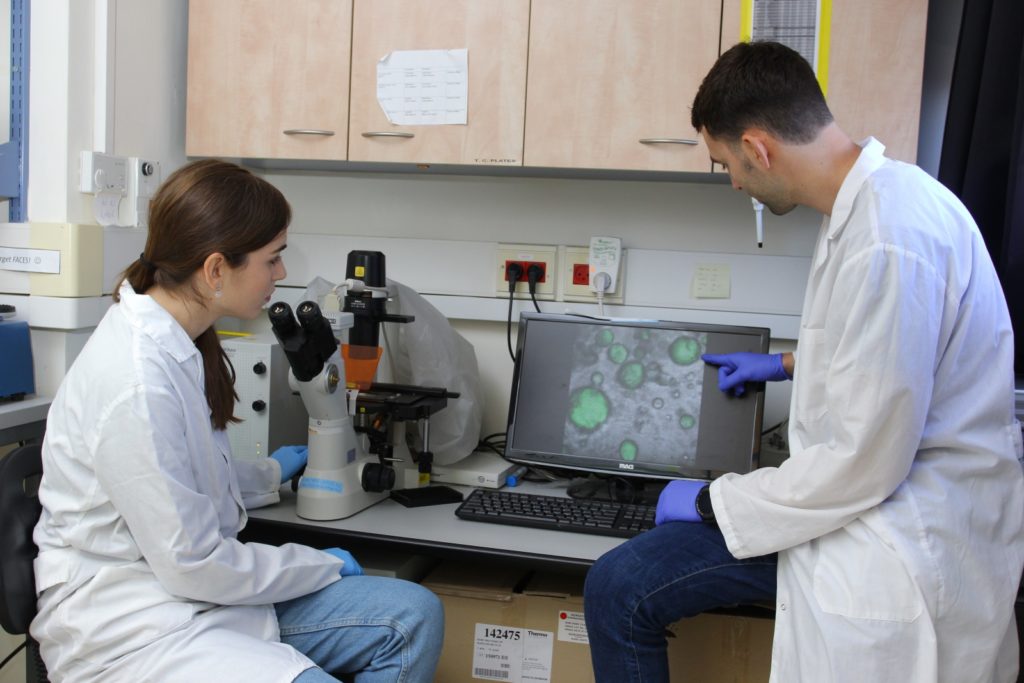
Our team is composed of dedicated students and researchers aimed at changing the way we treat diseases. Specifically, we focus on the way nanotechnology can be used to combat metastatic cancer.
visit our website at: https://www.schroederlab.com/
Photocatalysis and thin Film Lab
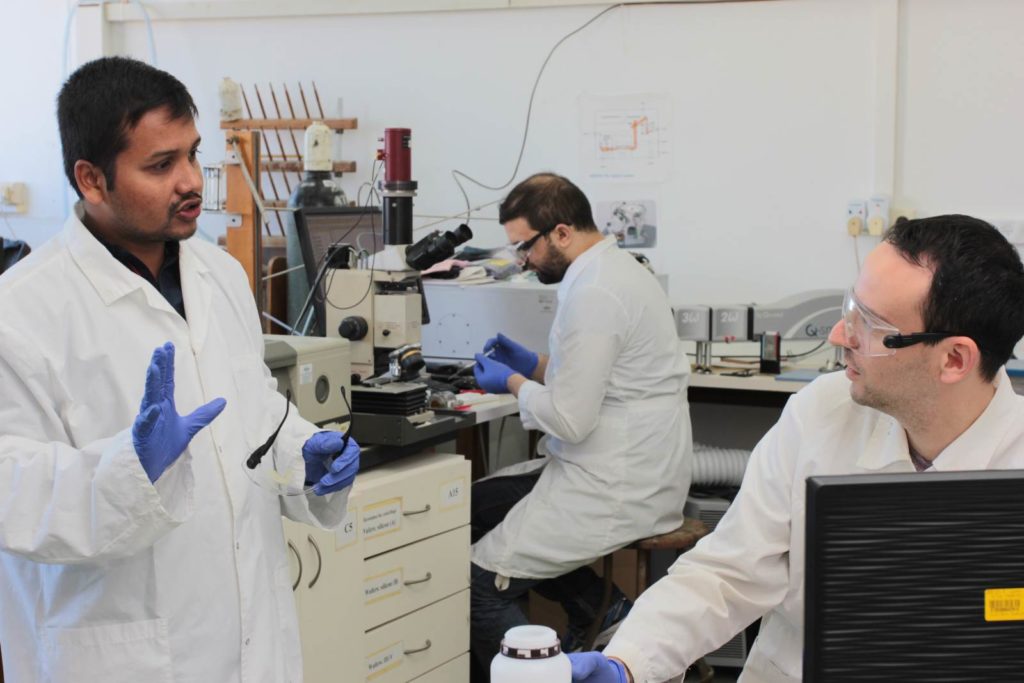
The Laboratory concentrates in the development of materials and methods of photocatalytic treatment of air, water and surfaces. In addition provides analytical services for external users wishing to use it’s equipment: AFM, FTIR, GCMS, HPLC.
for more details: http://pygroup.net.technion.ac.il/lab-facilities/
Rabin Desalination Laboratory
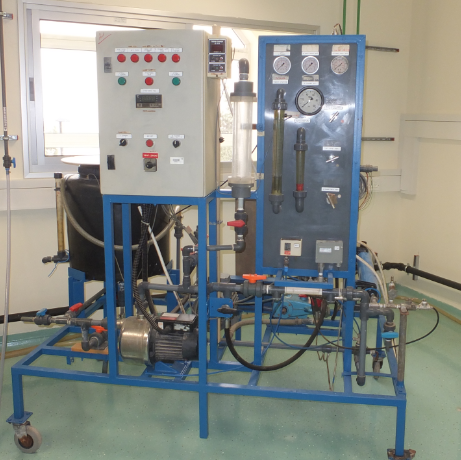
separation processes, membrane processes, Desalination, water purification, Nano-catalysis and adsorption, fouling prevention, models for membranes mass transfer.
The Technion Center for Electron Microscopy of Soft Matter
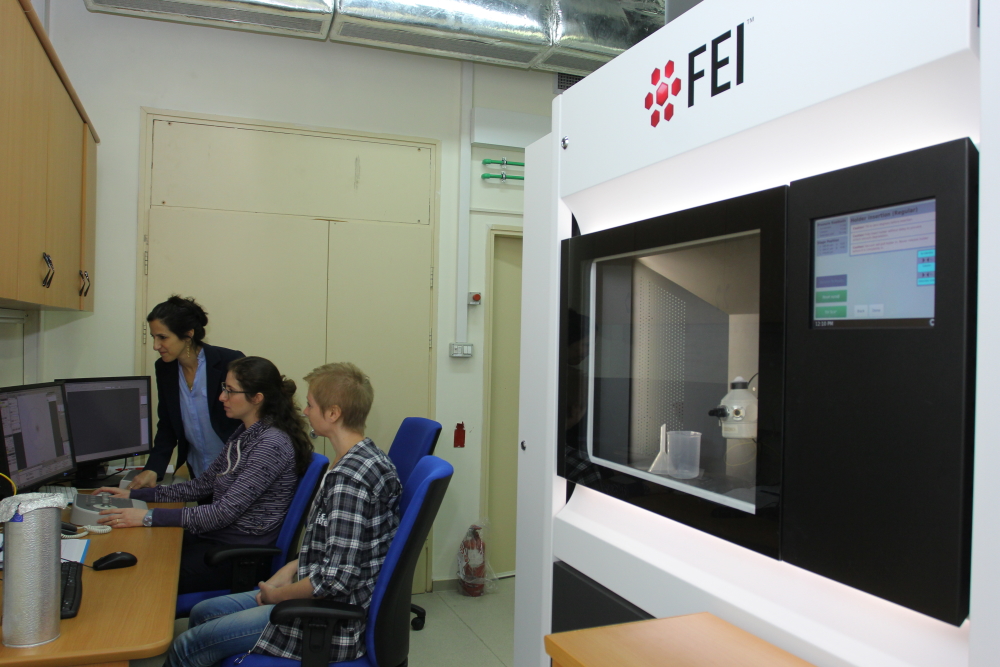
The Technion Center for Electron Microscopy of Soft Matter includes two TEMs and a high-resolution SEM.
All microscopes are cryo-dedicated, for cryo-TEM and cryo-SEM experiments, and are also available for room temperature work.
The newly arrived Talos, is a FEG equipped high resolution TEM and includes a Falcon direct detector for high resolution imaging at low dose mode and a Volta phase plates for contrast enhancement.
In addition, the Talos is also available for STEM imaging and for 3D characterization using TEM and STEM tomography. Advanced cryo-specimen preparation equipment is available, including equipment for freeze-fracture replication (FFR) and cryo-microtomy.
Laser Light Scattering

Light scattering is a non-invasive technique for characterizing macromolecules and a wide range of particles in solution. In contrast to most methods for characterization, it does not require outside calibration standards therefore it is an absolute technique.
Light scattering experiments can be classified as Static Light Scattering (SLS) or Dynamic Light Scattering (DLS). Both techniques involve the measurement of the intensity of the light scattered from the solution. Light scattering occurs due to the local heterogeneity in the polarizability, ƒׁ, or in the refractive index, n, over the scattering volume. These fluctuations may arise from the fluctuations in temperature, pressure or in concentration.
In Static Light Scattering (SLS), also know as “classical” or “Rayleigh” scattering, the intensity of the scattered light is measured as a function of angle. For the case of macromolecules such as proteins of polymers, this measurement can yield the molar mass, rms radius, and second virial coefficient (A2). For certain classes of particles, static light scattering can yield the size, shape, and structure.
In Dynamic Light Scattering (DLS), also called Photon Correlation (PCS) or Quasi-Elastic Light Scattering Spectroscopy (QELS), one measures the real-time fluctuations in the intensity of scattered light. This data is used for the determination of the mutual diffusion coefficient of the scattering particles. In dilute solutions, this diffusion coefficient can be further used to estimate the size of particles, and, in the case of macromolecules, the molecular weight and the conformational state of the polymer chains.
Our Department has the Bl-200SM Research Goniometer System (Brookhaven Instruments, Inc.) that enables both SLS and DLS experiments. Our instrument is equipped with a Compass 415M solid state laser generating light of 532 nm wavelength (green). We also own a BI-DNDC Differential Refractometer (Brookhaven Instruments, Inc.) for the determination of the refractive index increment
פיזור קרני לייזר
פיזור קרני לייזרפיזור קרני לייזרפיזור קרני לייזרפיזור קרני לייזרפיזור קרני לייזרפיזור קרני לייזרפיזור קרני לייזרפיזור קרני לייזרפיזור קרני לייזרפיזור קרני לייזרפיזור קרני לייזרפיזור קרני לייזר
פיזור קרני X
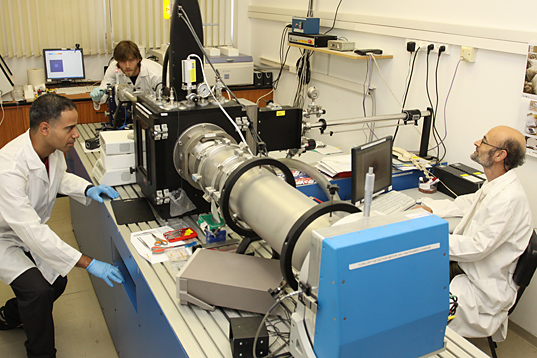
פיזור קרני X בזוויות קטנות (SAXS) הינה טכניקה ידועה ללימוד מאפיינים מבניים של מימדים קולואידיים וננו-מטריים (1-100 ננו-מטר). ניתוח הולם של המידע מ-SAXS יכול לספק מידע מבני עשיר אודות אובייקטים בסקאלת הננו, ביולוגיים או סינטטיים, כדוגמת גודל, צורה, מבנה פנימי ומסת חלקיקים, דרגת אגלומרציה או מבני על, פילוג גדלי חלקיקים במערכות פולידיספרסיות ומימדים פרקטליים במערכות לא מסודרות. טכניקה זו ניתנת ליישום בתחומי מחקר שונים: תמיסות פולימר וג’לים, ביו-פולימר וחומרים ביו-אקטיביים בתמיסה, מערכות של חומרים פעילי שטח וקולואידים, דיספרסיות נוזליות של ננו-חלקיקים (אבקה או מרוכב), קרמיקה, זכוכיות סול-ג’ל, זיאוליטים, פולימרים גבישיים למחצה, תערובות פולימריות, בלוק קופולימרים, סיבי פולימר (כולל ננו-סיבים), חומרים מרוכבים (וננו-מרוכבים).
SEM רזולוציה גבוהה
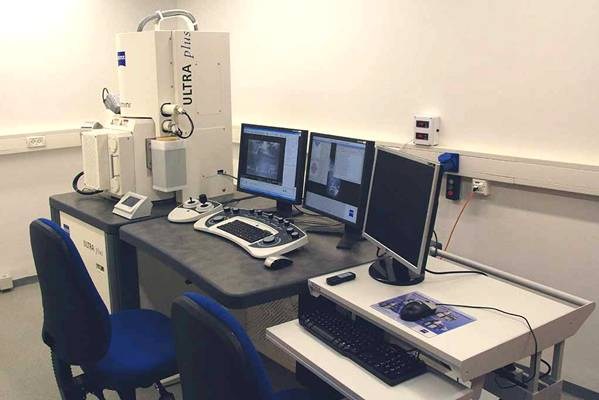
SEM רזולוציה גבוההSEM רזולוציה גבוההSEM רזולוציה גבוההSEM רזולוציה גבוההSEM רזולוציה גבוההSEM רזולוציה גבוההSEM רזולוציה גבוההSEM רזולוציה גבוההSEM רזולוציה גבוההSEM רזולוציה גבוההSEM רזולוציה גבוההSEM רזולוציה גבוההSEM רזולוציה גבוההSEM רזולוציה גבוההSEM רזולוציה גבוההSEM רזולוציה גבוההSEM רזולוציה גבוההSEM רזולוציה גבוההSEM רזולוציה גבוההSEM רזולוציה גבוההSEM רזולוציה גבוהה
